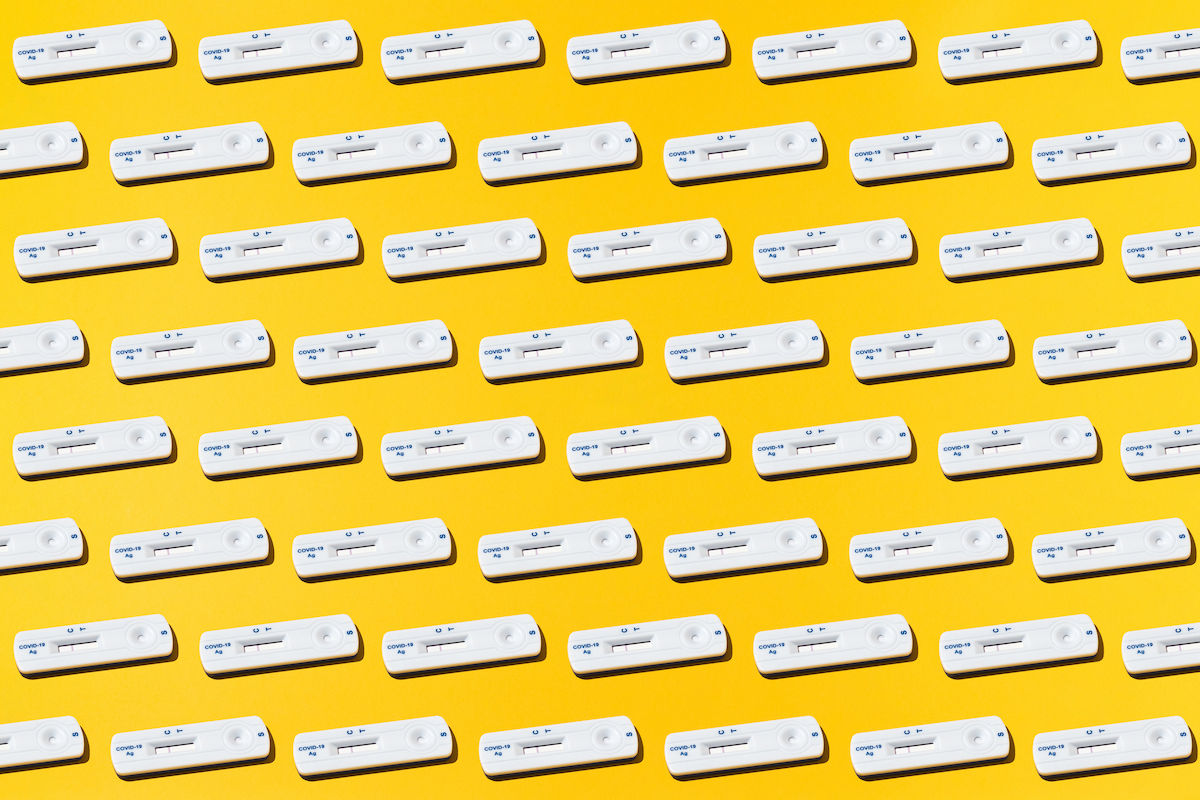For some parents, this is a welcome relief. They feel sufficiently protected without masks, they feel that masks have been difficult for their children, or both, and they are ready to move on. But for others — and that’s the group this particular newsletter is really for — this move is scary, or at least a little uncomfortable.
I hear various angles on this discomfort:
- My kids are vaccinated, but not all the other students are.
- My kids are too young to be vaccinated.
- I’m a vaccinated teacher or child-care worker, and I’m worried about bringing COVID home.
It is easy to feel in the current moment that these fears are being basically dismissed. That everyone is expected to want to return to this piece of normalcy. If it’s hard to get there, though, it can feel isolating.
Today I want to talk through how you might approach this, in two phases. First, I’ll try to give some concrete numbers about the size of the changes in risk with mask removal. Second, I’ll go over the individual-oriented protection options that remain available.
I’m deliberately going to stay away from arguments about the right policy. At this point, none of us have much control over that. Instead: a focus on the fact that this is happening, and how you can process it.
Changes in risk
We’ve all become much more savvy at processing risk in the past two years. A particular challenge has been thinking through risks that are small but not zero; we aren’t well-calibrated to processing a 1-in-1,000 risk versus 1-in-10,000. I’ve frequently relied, both personally and in writing, on comparative risk. That is: comparing the risk from COVID to another risk that most people are more comfortable taking (the flu, say, or driving).
I think this approach is even more fruitful here, because there is an obvious comparison: the risk prior to the removal of masks. I’m going to focus on infection risk rather than serious-illness risk; kids are at very low risk for the latter, but my sense is that much of the concern remains about infection overall, because of either a risk of spreading to others, a lack of vaccine availability for younger children, or a general fear of unknown consequences.
You can think about the infection risk for kids at school as the chance that someone comes to school with COVID, multiplied by the chance that your child is infected by that person. Let’s call these two numbers A and B. Overall, the risk is simply:
A x B
You may have once sat down and carefully thought through these numbers, or maybe not, but whatever that risk is, you’ve been living with it. In the data, we’ve seen that this overall risk is small, probably due to some combination of both A and B being relatively small.
Over the past year-plus, there have been many changes that alter both A and B. “A” — the chance that someone comes to school with COVID — has been higher during surges, and has probably moved around with changes to testing surveillance systems. “B” — the risk of your child getting COVID from another person at school — has moved around with ventilation improvements, for example, and with the transmissibility of the virus. During the Omicron wave, this number was larger in all settings.
When we think about the removal of mask mandates in school, we’re thinking about removing a precaution that affects B. The goal of wearing masks, in school or elsewhere, is to lower viral transmission. The result of removing mask requirements in schools or child-care settings could be to increase B.
It is difficult to put a number on the likely magnitude of this change. Some people have argued that it’s close to zero; that we have little evidence that, as practiced in schools, masking produces lower COVID rates. (This Atlantic piece has a summary of that argument.) On the other hand, the science of aerosols makes it seem plausible that masks would reduce transmission. A randomized trial in Bangladesh estimated a 10% reduction in symptomatic COVID after the encouragement of masks. Analysis of the impact of cloth masks (still the standard in schools) on aerosol transmission in a more lab-based setting would suggest perhaps a 50% reduction in risk if both people were wearing them.
Unfortunately, our data on this is simply not good enough. (Why not? I ask, as always.) But what I’d say is that a 50% reduction in risk as a result of a mask mandate would be an extremely conservative upper bound. There seems to me no possible way that the currently implemented mask mandates in schools are more effective than this at reducing transmission, and very likely that their actual efficacy is far, far lower.
But for the purposes of this “bounding” exercise, let’s assume that it is 50%. This would mean that when masks are removed, the transmission rate doubles. This seems scary — now the risk of infection seems to be doubled. But it may not be. Because what has prompted the removal of masks is a decline in case rates.
Where I live, in the third week of January, the daily case rate was about 500 per 100,000. It’s now 24. This means that the risk of any given person having COVID has reduced by a factor of about 20. So even if the risk of infection doubled for my child with the removal of masks, the overall risk is still down by a factor of 10. If, instead, we assume masks only reduce transmission risk by 10% — which is what was observed in the randomized trial in Bangladesh — then the risk is 18 times lower now than at the January peak.
This is all to say: if you put it in perspective in terms of changes, a removal of masks at this moment in the pandemic is extremely unlikely to result in the highest infection risk your child has experienced at school, even in the past month or two. (This same argument, turned on its head, is why it may ultimately make sense to return to masking during future surges).
A fair response, of course, is that maybe when you reflect on this, you generally still think any risk is too high. Masks feel like something we can control, in contrast to COVID rates. If your goal is to have the overall “A x B” infection risk be as low as possible at any given moment, the removal of masks gets in the way of that. In which case, please read on for reassurance.
Options you still have
“Mask-optional” does not mean “no mask.” Your child can still mask if you want them to. This is a crucially important point, because, with a high-quality mask, one-way masking is extremely effective. Others have written more extensively about this (for example, see here). The bottom line of these pieces is that if you are wearing a KN95 or N95 mask, you are very protected from infection even if everyone around you is unmasked.
I was on a podcast with Ashish Jha, dean of the Brown University School of Public Health, and he explained his sense of being quite protected with his N95 mask on even while treating unmasked, symptomatic COVID patients.
At this moment, you have the capacity, with your own actions, to lower transmission risk B to very close to zero, even if everyone else does nothing. Moreover, if your child is wearing a well-fitting, high-quality mask, the additional protection provided by other children and teachers wearing masks is quite minimal.
This point is, I think, equally important to those who work in schools and child care and worry about bringing COVID home. You can wear a mask in these situations and be extremely well-protected.
In conclusion
Part of what is scary about the removal of masks — in general and in schools — is that they are so visible that it feels like a huge change. I was in Tennessee last week, and the masking there is substantially lower than in Rhode Island. And I admit that it was a little jarring. Even though I masked myself most of the time and I’ve had three vaccine doses and have also had COVID, it was still just weird to be in the elevator with an unmasked person.
For many of us, those first days of mask-optional school will be jarring, whatever choice we make with our own kids and however confident we are in it. And that is OK. Hopefully the data above relaxes you a bit — either to be comfortable recognizing that the drop in case rates really lowers the risks, or in recognizing that you can still focus on your own protection.
Community Guidelines














